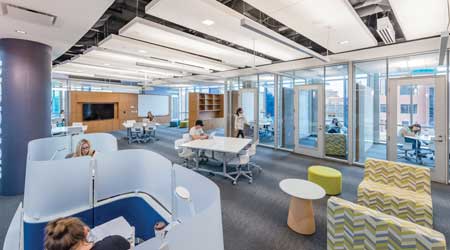By investing in design to impact occupant experiences positively, academic and healthcare institutions can see growth in learning as well as recruitment and retention, according to an article from Building Operating Management on the FacilitiesNet website.
When drafting design plans, there are a handful of principles and practices that will help promote a more positive experience.
Once a rather individualistic setting, higher education — particularly STEM programs — have embraced a more collaborative approach to learning curriculum and spaces. Students learn faster and with greater retention working with their colleagues as opposed to independently.
With environments like maker-spaces, tiered classrooms, and various types of flexible informal spaces, occupants have options for greater connection to facilitate problem-based learning.

 Building Sustainable Healthcare for an Aging Population
Building Sustainable Healthcare for an Aging Population Froedtert ThedaCare Announces Opening of ThedaCare Medical Center-Oshkosh
Froedtert ThedaCare Announces Opening of ThedaCare Medical Center-Oshkosh Touchmark Acquires The Hacienda at Georgetown Senior Living Facility
Touchmark Acquires The Hacienda at Georgetown Senior Living Facility Contaminants Under Foot: A Closer Look at Patient Room Floors
Contaminants Under Foot: A Closer Look at Patient Room Floors Power Outages Largely Driven by Extreme Weather Events
Power Outages Largely Driven by Extreme Weather Events